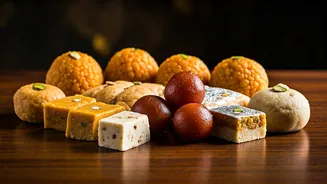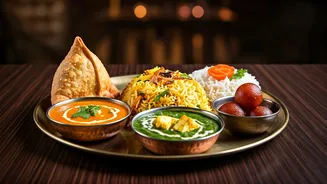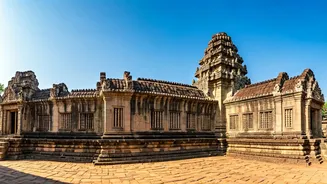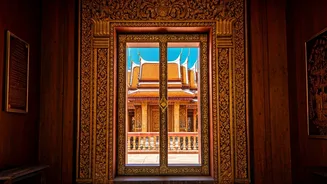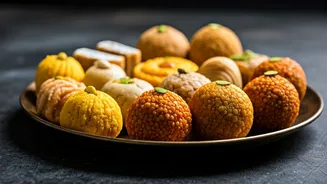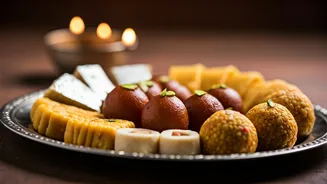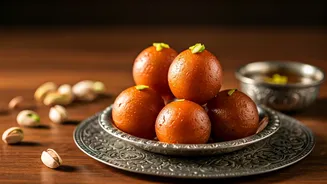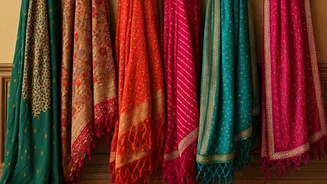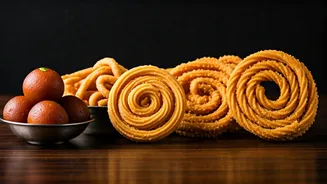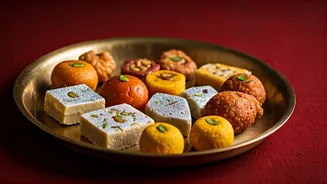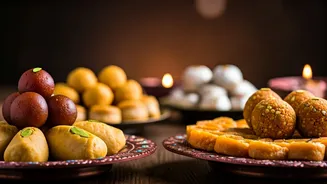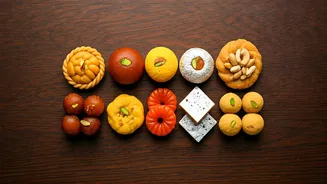A Sweet Start
The tradition of exchanging sweets during Diwali is deeply rooted in Indian culture, symbolizing prosperity and happiness. While gulab jamun and barfi
often take center stage, there's a wealth of other confections waiting to be discovered. These less-common sweets often hold cultural significance, representing the unique culinary heritage of different regions. Exploring these lesser-known treats allows for a broader appreciation of India's diverse gastronomic landscape and the stories woven into each sweet.
Regional Treasures Revealed
Various regions across India boast their own unique Diwali sweets. In the eastern part of India, the Rasmalai, a creamy cheese dessert soaked in sweetened, thickened milk, and the Malpua, a deep-fried pancake soaked in sugar syrup, are popular choices. Moving south, Mysore Pak, a rich, melt-in-your-mouth sweet made from gram flour, ghee, and sugar, and the Payasam, a rice pudding often infused with cardamom and nuts, exemplify the region's culinary skills. Further west, the Mohanthal, a besan-based fudge with a grainy texture, is a traditional Gujarati sweet. These regional specialties not only satisfy the sweet tooth but also highlight the rich culinary variety that characterizes the nation.
Uncommon Diwali Delights
Beyond the well-known regional favorites, several unusual sweets are perfect for celebrating Diwali. The Ghevar, a disc-shaped dessert made from flour and dipped in sugar syrup, originating from Rajasthan, is a visual and textural delight. The Chhena Poda, a baked cheese dessert from Odisha, provides a caramelized exterior and a soft, spongy interior. The Kakinada Khaja, a crispy, layered pastry from Andhra Pradesh soaked in sugar syrup, offers a contrasting mix of textures and tastes. By embracing these unique choices, Diwali can become a more adventurous and inclusive culinary experience, introducing loved ones to new and exciting flavors.
Embracing Culinary Diversity
Venturing beyond the typical Diwali sweets encourages the exploration of the diverse ingredients, preparation methods, and cultural significance behind each dish. Trying new sweets offers an engaging way to share different cultural traditions with family and friends. This can lead to enriching conversations, broadening horizons, and deepening appreciation for India's rich culinary traditions. The inclusion of uncommon sweets on the Diwali menu creates a festive atmosphere that is both memorable and delightful, demonstrating the beauty of India's unity in diversity. Diwali, after all, is a celebration of more than just sweets – it's a celebration of togetherness, tradition, and the joy of sharing.
